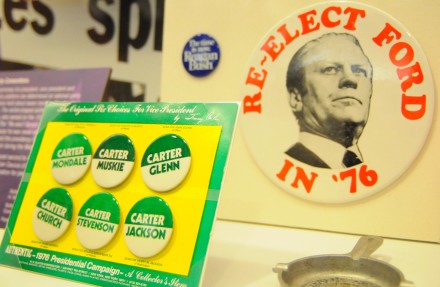By Jerry Harrington
The President of the United States commands the most powerful military force on earth and is able to send troops and the world’s most sophisticated equipment to the far ends of the globe with a single order. He — or she — can set the agenda of the nation with word and deed. With the stroke of a pen, the president can veto an act of congress or sign it into law and with every public move, commands media attention at home and abroad.
For more than 40 years, the quadrennial process of selecting this important political post has begun in the Hawkeye State — in gatherings in small towns, cities and the countryside as neighbors meet with neighbors to choose candidates for president in the Iowa caucuses.
Beginning in 1972, with little notice at first, the Iowa caucuses have bloomed and grown into a phenomenon covered by national and international media, drawing ambitious men and women seeking the American presidency who comb the state, seeking support from Iowans as the first step in selecting both the Democratic and Republican nominees for the highest office in the land.
The current cycle is no different with candidates from both parties campaigning throughout Iowa They all hope to win their respective caucus contests, or at least exceed expectations, to gain the media boost that can propel them to the 270 electoral votes that will elect one person president in November.
The Iowa caucuses, however, didn’t begin with these lofty ambitions. In fact, their origins were, more or less, accidental.
TO READ MORE ABOUT THIS STORY AND OTHER FASCINATING STORIES ABOUT IOWA HISTORY, subscribe to Iowa History Journal. You can also purchase back issues at the store.

